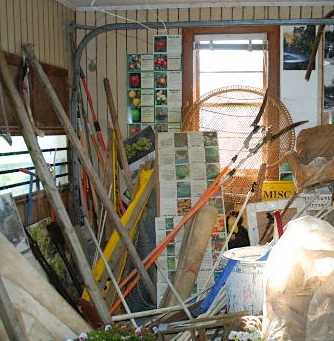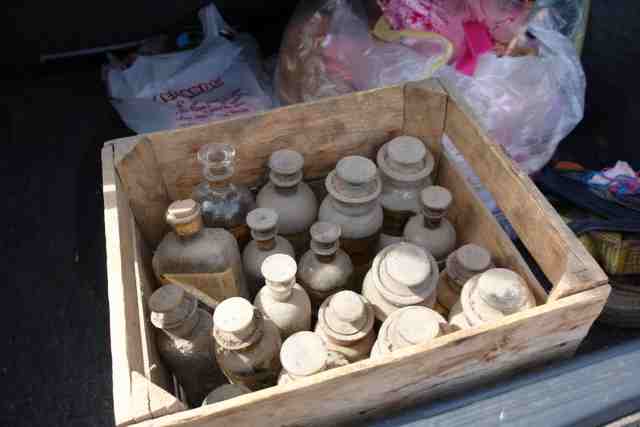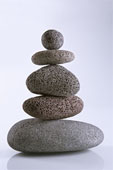 Decluttering your home or workspace can often seem overwhelming, but in truth it can be as peaceful as meditation, and can be a way to practice living mindfully and in the present moment.
Decluttering your home or workspace can often seem overwhelming, but in truth it can be as peaceful as meditation, and can be a way to practice living mindfully and in the present moment.
Clutter is a manifestation of either holding onto the past or a fear of what might happen in the future or it could be an unexamined thrifty nature that goes back generations.
Why do we have clutter in the first place? Why do we keep it when we don’t really need it? Maybe we think we do need it — for one of three reasons:
1. We don’t want to let go of the past. Often clutter comes in the form of emotional attachment to objects that have significance to us. They might remind us of a loved one, or a vacation, or a special event like a birthday, funeral, graduation, etc. It might be a gift from someone. All of this is a form of living in the past. I’m not saying we should forget about the past, but letting go of these objects (and they’re only objects, they’re not the events or loved ones themselves) is a way of releasing our longing for the past. I never forget the past, but it’s not a place in which I need to dwell. Living more in the present is freeing.
2. We’re afraid of the future. Clutter might be things we think we might need sometime in the future. We hold on to them just in case. Over-packing for a trip is a good example — we bring more than we really need, just in case we need them. It’s the same in our houses — we have a ton of things we don’t really need or use — just in case. We’re afraid of being unprepared for the future, but the truth is we can never be totally prepared. We can’t control the outcome of the future, and trying to do so means that we’re never really living in the present moment. We’re always preparing for what might (or might not) come.
 3) Some of us have an inbred thrifty nature. Our parents or grandparents lived during the depression and World War II, when every item was prized and almost nothing was thrown away. These are good traits when needed. When unnecessary, these actions can lead to clutter in our environment, which stymies the very freedom and comfort they were meant to protect. The good news is that we live in a time when items of clothing, packaging, and household use can be easily reused by others or recycled to make new items. Old jeans, even ripped and unwearable, can be made into sustainable shoes. Paper and cardboard can be recycled for use in new products. And, all manner of home items will be prized by others and purchased in a thrift shop whose proceeds go to help the homeless and disabled. The thing to keep in mind is that we can let go of items too good to waste, with the assurance that they won’t BE wasted, if we take them, or send them, to the right place.
3) Some of us have an inbred thrifty nature. Our parents or grandparents lived during the depression and World War II, when every item was prized and almost nothing was thrown away. These are good traits when needed. When unnecessary, these actions can lead to clutter in our environment, which stymies the very freedom and comfort they were meant to protect. The good news is that we live in a time when items of clothing, packaging, and household use can be easily reused by others or recycled to make new items. Old jeans, even ripped and unwearable, can be made into sustainable shoes. Paper and cardboard can be recycled for use in new products. And, all manner of home items will be prized by others and purchased in a thrift shop whose proceeds go to help the homeless and disabled. The thing to keep in mind is that we can let go of items too good to waste, with the assurance that they won’t BE wasted, if we take them, or send them, to the right place.
By the way, books are a good example. We hold onto books we’ve already read, as trophies of our reading accomplishments. We hold onto books we might read in the future, with the optimism that our future selves are going to be more amazing than we’ve ever been in the past. In truth, you probably need far fewer books — and should keep only the ones you might read in the next months. Then after you’ve read those, donate those books to charity and get a tax deduction while you’re at it. Libraries are a great free resource for most of your reading needs in the future.
Look at your clutter carefully, one object at a time, and ask yourself why you’re holding onto each object. If you’re honest, it’s probably for one of these three reasons.
Letting Go of Clutter is Freeing
 I slowly get rid of clutter, and in doing so, I release my mind of these attachments and fears. It’s a liberating process. Clutter is the physical embodiment of these attachments and fears — emotional stuff that we don’t realize we have. By decluttering, we are clearing ourselves of these tangled weeds.
I slowly get rid of clutter, and in doing so, I release my mind of these attachments and fears. It’s a liberating process. Clutter is the physical embodiment of these attachments and fears — emotional stuff that we don’t realize we have. By decluttering, we are clearing ourselves of these tangled weeds.
And when I’ve gotten rid of clutter, I’m freed. I can fully appreciate life as it happens.
It’s of course possible to live in the moment even if you have clutter. There is no prerequisite to mindful living. But decluttering can be a beautiful process of helping ourselves let go of the things we don’t realize we’re holding on to. And really, anything can be used as a way to practice mindfulness. I’ve often used running and walking, but also washing dishes and sweeping.
I am Living in the Present During the Process of Decluttering.
Here’s How to Do it:
- Pick one cluttered flat surface. It can be a tabletop, countertop, shelf, the top of a dresser, floor of a closet, floor of a room (just a section of that floor to start with). Don’t worry about all the rest of your cluttered spaces for now — just pick this one space. Small is good.
- Clear that surface. Take everything off and pile it on the floor or another table. Clean the surface while it’s clear — wipe it with a cloth, slowly and mindfully.
- Take one object from the pile. Forget about the entire pile — just look at that one object. Ask yourself why you have it. Is it for emotional reasons, or do you really use it? Is it for “just in case”? Is it because you don’t want to waste it? When was the last time you used it? If you don’t really need or use it, put it in a box for donation or trash it. If you do really use it, put it in another pile to be put back on your now-clean surface. If you’re on the fence and can’t bear to give something up, put it in a “maybe” box and put that box away for six months (mark the date on your calendar).
- Repeat, one object at a time. Practice doing this mindfully. Make a decision with each object — keep, donate, or maybe box. No waffling or putting off decisions. Deal with each object once, then move on.
- Put the objects back, and make a “home” for each one. Each object needs to have a spot that is its home, and you should always put those objects back in their homes. If you can’t find a home for an object, you don’t have space for it. Donate the items in the donation box, and put away the maybe box. Eventually you won’t need a maybe box as you get good at this.
Learn to focus on one thing at a time, mindfully, and deal with each object once. This is a good practice for doing things in the rest of your life.
(From the Blog, Zen Habits)
Geri Weis-Corbley contributed to this article




















I’m moving house in a couple of months time and this is really helpful!